Lisa Norton
“The opposite of play is not work. The opposite of play is depression” – Steve Keil
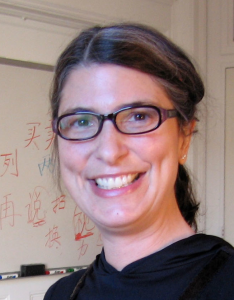
- Lisa Norton
I recently had the chance to learn more about the work of Philipp Guzenuk, the creator of “Happiness in Action: energy sources for peak performance” an innovative approach to leader and organizational development when I interviewed him as part of an online summit on new entrepreneurship. For four days in November, some 30 pioneers of generative and creative enterprise explored The Spirit of Enterprise: Business Approaches to Regenerating the Commons via live interviews & panel discussions hosted by Meridian University.
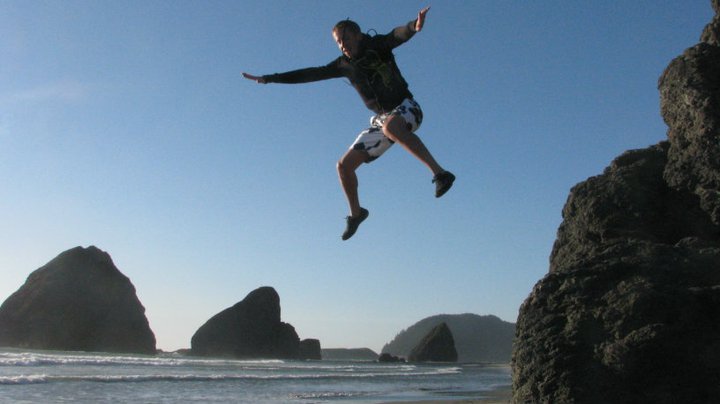
Phillip Guzenuk is an integrally informed expert in leadership and organizational development and especially in finding happiness-in-action, at work. He coaches entrepreneurs and executives of leading companies via corporate change management programs, strategic sessions, individual and group coaching. He works internationally as a partner of the Coaching Institute and Director’s Club of Saint Petersburg founded by colleagues Alexander Savkin and Marina Danilova and through which Philipp founded and co-authored the “Russian Leaders Development Research Project”. Philipp also serves as a consultant to both MetaIntegral Associates and Dana Carman Integral Consulting in the USA.
Philipp has been successfully translating insights from positive psychology for corporate and organizational settings through his unique offering “Happiness in Action: energy sources for peak performance”. His primary activities include leading workshops focused around his own model as well as coach development and group interactive conferences employing technologies such as Open Space, World Café, and Appreciative Inquiry.
In interviewing him I was curious to understand how positive psychology had influenced the development of his own business model. In 2008, in the context of the Coaching Institute and Director’s Club of St. Petersburg, a chamber of commerce including representatives from Moscow and St. Petersburg dedicated to effective and profitable partnerships, Guzenuk founded and launched a research study, “The Russian Leader Development Project” (2008), interviewing more than fifty CEOs of medium and large Russian companies to understand why and how they develop, asking among other questions, ‘What are the key moments of leader growth?’, ‘What influences a leader’s happiness?’, ‘What kinds of help do leaders most need?’ Philipp’s own role as co-author of the study was transformative. Struck by the level of stress he witnessed in these top executives and the toll it was taking on their lives, he committed to make a difference. Guzenuk began studying the 15 to 20 percent of positive deviant respondents who despite working under similar pressures and challenges within the cutting edge Russian business environment, just weren’t suffering. On the contrary they were experiencing their work as a source of energy and enlivenment. Key insights of the study included the ability and willingness to see crises as sources of growth, and the insight that the safe path does not lead to true leadership. Rare factors that appear to enhance leader growth are: stillness and reflective silence as well as high-quality, unbiased feedback at regular intervals.
Guzenuk’s core inquiry remains ‘How can we turn the work itself — even the most difficult parts of our work, into a source of energy?’ To date he has facilitated over 200 Happiness in Action workshops for a total of some 5000 participants. These successful workshops are based on his model of seven sources, which he calls ‘rivers’ of happiness-in-action energy, which although they focus on working contexts, are actually available to us in any context or situation. These rivers originate in meaning and purpose.
“… what I came to understand in those years of work is that there are ‘rivers of energy’ in any kind of occupation. Speaking integral language we might say lines of development…So my work is based around teaching … and coaching around those using these ‘seven rivers of energy’ as I call them.” (2013)
- Find meaning
- Be in flow
- Learn from work
- Be optimistic
- Love (as mutual trust and respect)
- Play
- Influence
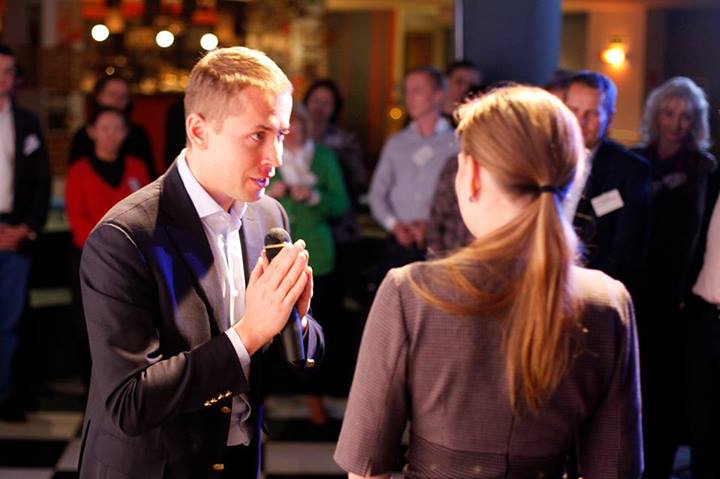
Coasting on river number 2, being in flow, is a way of being central to Guzenuk’s model.
“We work with flow in a very practical way in terms of how you can really get into flow both individually and as a team. And also how can you get out of it when you need to do that because flow can also be contagious and dangerous if you stay there too long.” (Guzenuk, 2013). Guzenuk pointed to insights developed by Professor Mihaly Csikszentmihalyi about states of peak performance (1998). In working river number 2 with clients, Guzenuk constantly performs a dance between the river and the river banks; between flow and structure, creating vivid examples to help remind clients that each ‘river’ represents a critical energetic polarity that must be attended to in order to avoid getting stuck in any particular expression.
“Flow can be very dangerous. Anything from just being carried away and forgetting the time of the day and missing appointments to serious addictions that could ruin your life. There is research about people who have flow-rich careers like sport professionals and they stop getting that flow when they exit the world of professional sports they get addicted to drugs or something else to replace the loss. Then there is workaholism — flow can be that ‘destructive passion’.” (2014)
Regarding river number 4, being optimistic, a definition of true optimism that Philipp learned from a Lithuanian colleague in an organizational development program, “It’s about looking into the heart of the problem or the situation and being able to not only find the solution but also to create positive emotional energy out of the heart of the problem both for yourself and for those around you. So that’s how I define optimism. Being able to turn the deepest dark side that you can get to, into a source of energy for yourself and your team.” (Guzenuk, 2013)
River 5 is love, which in most corporate contexts is best defined as mutual trust and respect. Active engagements in flow and play bring our full capacities innocently and unguardedly to each moment of unfolding in the openhearted space of love and delight.
Philipp and I met as peers in the playful yet challenging context of the MetaIntegral Embodied Practitioner Certificate program. I was curious to know how Philipp had established his design criteria for fostering happiness-in-action in his own work and in assisting others to meet and exceed their own peak performance objectives, as well as how he actually applies the Happiness in Action model in keeping his own business thriving and fresh. His answer, of course (!) is that he plays with the model, actively tapping it as a generative source of personal learning and transformation.
“I work with the model every day… mostly what I do is pick a factor of the model (a river of energy for the day) and make notes on everything I notice around it during the day and then in the evening sum it up in my diary. There are some periods of time when I do it publicly in my weblog. And sometimes just for myself. I also sometimes dance with the factors expressing the energy of one or another energy river through movement.”
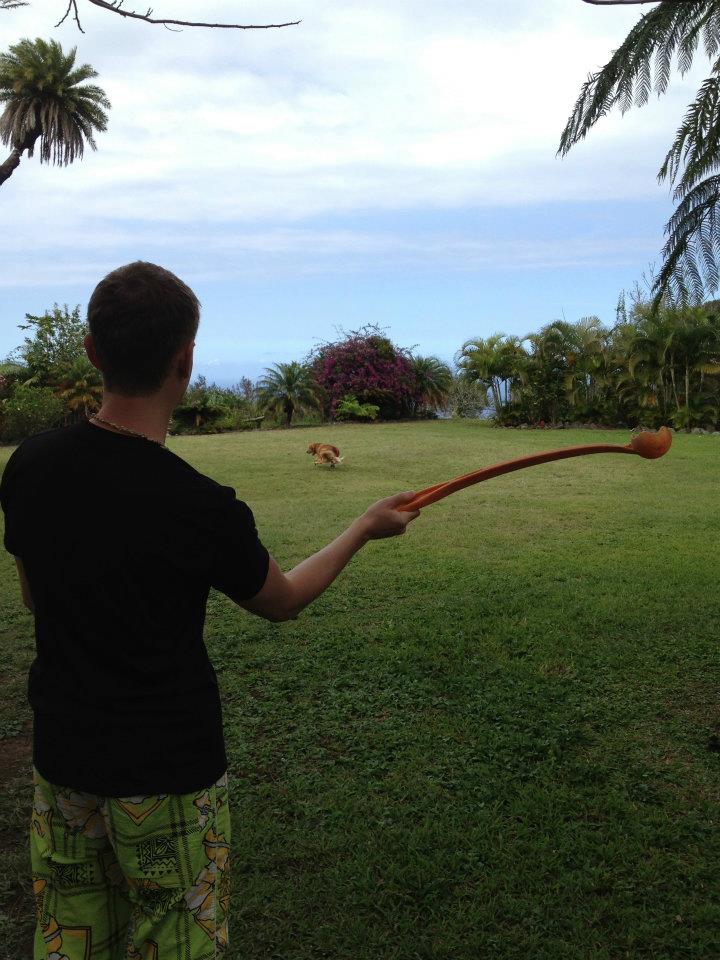
Play is the 6th river of Guzenuk’s model for Happiness in Action. Noting that working in the complex and contingent contemporary business contexts of today is to encounter some very tough challenges, the 6th river of his model is about encountering work itself as play and finding the play within the work, as opposed to creating a playful diversion from the work. I asked him to share how he thinks, feels and activates play in the AQAL, how he actually goes about creating the conditions for happiness as an energy source for peak performance in all four quadrants of experience. And how he helps a diverse range of clients to anchor their newfound sources of positive energy in user-tailored virtuous feedback loops of practice.
“Play has its own energy for every person. Everyone has a usually largely forgotten play history. Everyone has favorite kinds of play and modes of play and entry points into play. So, you can definitely think of play in terms of states and lines and types… Play is also a lot about the body. … And of course play is a social phenomena – there are all kinds of social play structures and games that you can play together and contexts that are really best seen as games… speaking of levels of complexity and mastery – they are absolutely needed for game design. But also there are different games people like to play on different developmental levels and also certain games need to be communicated differently for different levels…this all is a one big game for me :)”
Although Guzenuk specializes in play with executive teams, he cautions against oversimplified versions of games in the workplace, particularly those that adopt just the game mechanics aspects such as the use of points and badges, without the deeper drivers of mission and vision. Gamification, expected to be among the hottest marketing trends of 2014, is typically applied in product, policy and service designs such as sales and loyalty programs and employee retention programs. I asked Philipp to comment on the trend of gamification. Philipp’s response was loud and clear, “gamification is a BUZZWORD…and I think a lot of companies are starting to use it. I think gamification is a response to the trend of disengagement.” (2013)
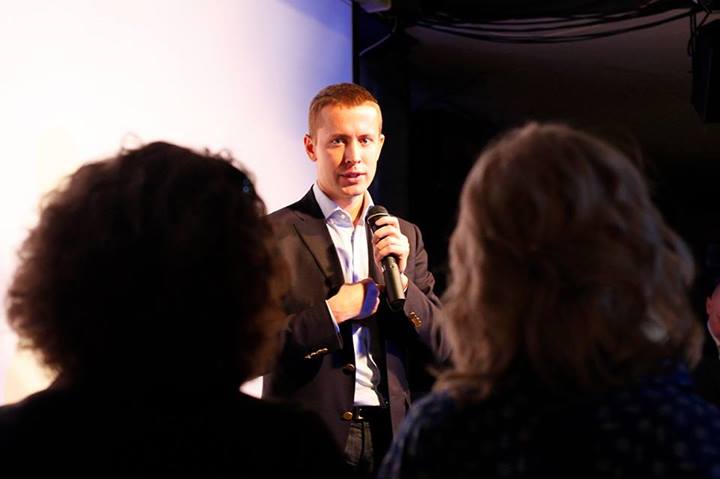
While it’s true that gamification is a buzzword it is also revealing of our society’s current and emerging ways of being and knowing. Like design, (another corporate cultural buzzword) gamification is a way of bringing conscious intentionality to structured human interactions. Game theory, game thinking and game mechanics are modes of interaction design for relations within a paradigm of play. Both gamification and positive psychology can be seen as responses to the generalized alienation and disengagement that feature prominently in contemporary life.
Martin Seligman originally articulated the shift in psychology from a disease model to a wellness model with an emphasis on strengths and virtues in Authentic Happiness (2002) which he then radically revised in Flourish (2012) elaborating on his distinctions between the pleasant life, the engaged life and the meaningful life. At the Royal Society of Arts, Seligman articulated an account of the good life, which consisted of five elements under the acronym PERMA standing for Positive emotion, Engagement, Relationships, Meaning and Achievement. (2013) Cultivating flourishing is a very different game from that of relieving suffering. Martin Seligman equates psychology, play (entertainment), technology and design, characterizing each as a neutral instrument, empty and meaningless in and of itself unless aligned with purpose:
“The problems of psychology seem to be parallel to the problems of technology, entertainment and design in the following way: we all know that technology, entertainment and design have been and can be used for destructive purposes. We also know that technology, entertainment and design can be used to relieve misery…design—and I believe entertainment and technology can be used to increase meaning engagement in life as well. …with technology, entertainment and design we can actually increase the amount of tonnage of human happiness on the planet. If technology can in the next decade or two increase the pleasant life, the good life and the meaningful life it will be good enough. If entertainment can be diverted to also increase positive emotion, meaning, eudaimonia, it will be good enough. And if design can increase positive emotion, eudaimonia, flow and meaning, then what we are all doing together– it will all become good enough. ” (Seligman, 2004)
Design thinking shares a number of tactics with the trendy ‘gamification thinking’. In resonance with Seligman’s remarks about design, play and technology, gamification may be understood as a specific application of design thinking because it employs a range of theories and tactics in an effort to elicit or discourage particular responses or behaviors.
Although the increased prevalence of gamification strategies since a peak around 2010 is usually attributed to the impact of social media and the influence of the socially immersive and wired Millennials, it is also true that games and play are among the earliest forms of human relating. The Millennial generation is responding to the alienation and ennui so prevalent in the Modern and Postmodern culture with its own fresh brand of play based in connectivity and direct involvement.
Game mechanics are tools to incent or dis-incent engagements. The bringing of game mechanics to organizational programs or initiatives tends to enhance user involvement by means of entertaining or competitive game-like engagements that tend to make goals more personally relevant, tangible, and/or fun—usually by providing the real-time feedback that keeps us involved and playing. This commitment to stay in the game in turn makes us more likely to succeed. For example, employee health improvement goals situated within a gamified, competitive context are more likely to stick over time as tangible lifestyle changes.
Understanding happiness as an active skill rather than a passive disposition speaks to the crucial role of direct and active participatory engagements. I was recently reminded of this when a friend mentioned Stephen Jenkinson’s description of grief as a skill in the film Grief Walker. (Wilson, 2010) Relating this to emerging research on brain neuroplasticity speaks of a cultivated capacity to feel our experiences in their fullness of enfolded depth and expansive breadth. Re-directive and re-generative types of designing and playing are tentative answers to Seligman’s call for alternate future technologies, designs and entertainments ‘diverted’ to serve the alternative and super-ordinate objectives of our collective planetary flourishing.
I asked Philipp to reflect about what early life conditions or experiences may have especially prepared him to do the work he does now. He responded by recalling that during childhood he did find himself playing alone quite often. He found happiness in actions and inventions of his own making. Every summer he directly engaged Nature, spending time playing and walking in remote and relatively wild fields, hills and forests for months on end.
Richard Rudd speaks to the crucial function of play in Gene Keys “…What incredible things life discovers when it is left alone to play! …the chaos of play is to be deeply trusted and revered. Play is the expression of genius and genius always finds a new solution to the challenges it meets along the way. We are all really children–children of the cosmos—and our only real job is to let go of our seriousness and find the delight in every exquisite jewel that life places before us.” (Rudd)
Philipp Guzenuk describes play not as a mere trend but rather as a planetary wave of consciousness. “The name of the wave is the desire of people to be more alive in what they are doing. People really want their work to be meaningful. They really want to feel it. They really want to love it. They really want to live it… also it does need translation because you speak a different language to some people who work in say creative industries in New Zealand versus miners in the far northern Russian cities or in Siberia. What’s inspiring to me is that at the core it’s the same wave of consciousness that is washing over the planet.” (2013)
I asked Philipp to describe his personal developmental edge and any insights that are currently unfolding through play. “For me the growth edge is in the dance with the system, and the dance with the culture, and the dance with the organism of the company. When you go into a company you see all the different factors on all the levels…it’s a very interesting and intricate dance to help those people create something. Mostly, I’m learning to undo–to lower my influence, to be barely touching the system and not trying to fix anything…I really see how every system has all the components for its own growth …and how sometimes I am in the way of that as a consultant, with all my models and my understandings. So the growth edge for me is to be very respectful of what’s happening in the system and to try to dance with it in a very loving way.” (2013)
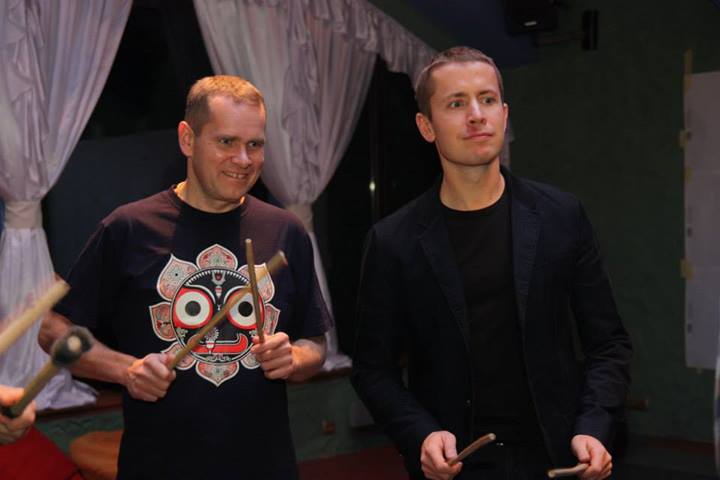
About the Author
Lisa Norton has been Professor at the School of the Art Institute of Chicago since 1992. She teaches, consults and facilitates in whole systems design thinking and re-generative design education.
Works Cited
Csikszentmihalyi, M. (1998). Finding Flow: The Psychology of Engagement with Everyday Life. New York: Basic Books.
—, (2008). Flow: The Psychology of Optimal Experience. New York: Harper Perennial Modern Classics.
Gilbert, D. (2007). Stumbling Upon Happiness. New York: Vintage.
—, (2004). TED2004. “Dan Gilbert: The Surprising Science of Happiness” http://www.ted.com/talks/dan_gilbert_asks_why_are_we_happy.html
Guzenuk, P. (2013). Personal Communication between Lisa Norton and Philipp Guzenuk recorded on November 2, 2013. The Spirit of Enterprise: Business Approaches to Regenerating the Commons hosted by Meridian University. http://meridianuniversity.edu/index.php/the-spirit-of-enterprise-summit.
—, (2014). Personal Communication. January 6.
—, (2008). (Directors Club of St. Petersburg). “Development of Russian Business Leaders”. http://www.trainings.ru/library/reviews/?id=9657
Haidt, J. (2006). The Happiness Hypothesis. New York: Basic Books.
Keil, S. (2011). TEDX2011. “Steve Keil: A manifesto for play, for Bulgaria and beyond” http://www.ted.com/talk/steve_keil_a_manifesto_for_play_for_bulgaria_and_beyond.html?quote=986.
McGonigal, J. (2010). TED2010. “Jane McGonigal: Gaming can make a better world” http://www.ted.com/talks/jane_mcgonigal_gaming_can_make_a_better_world.html
—, (2012). TED2012. “Jane McGonigal: The game that can give you 10 extra years of life” http://www.ted.com/talks/jane_mcgonigal_the_game_that_can_give_you_10_extra_years_of_life.html
Petro, G. (2013).“Millennial Engagement and Loyalty—Make Them Part of the Process”. Forbes online. March 21, 2013.
Rudd, R. (2013). Gene Keys: Unlocking the Higher Purpose Hidden In Your DNA. London: Watkins Publishing.
Savkin, A. and Guzenuk, P. (2012). Notes from the Field: “International Integral Journey with Coach Institute, Russia” Integral Leadership Review. January 8.
Seligman, M. (2012). Flourish: A Visionary New Understanding of Happiness and Well-being. New York: Atria Books (Simon & Schuster).
—, (2002). Authentic Happiness: Using the New Positive Psychology to Realize Your Potential for Lasting Fulfillment. New York: Free Press (Simon & Schuster).
—, (2004). TED2004. “Martin Seligman: The new era of positive psychology” http://www.ted.com/talks/martin_seligman_on_the_state_of_psychology.html
—, (2013). Wikipedia. http://en.wikipedia.org/wiki/Martin_Seligman
Wilson, T. (2010). Griefwalker. http://orphanwisdom.com/griefwalker/.
